- Home
- Paul Christopher
The Templar throne t-3
The Templar throne t-3 Read online
The Templar throne
( Templars - 3 )
Paul Christopher
Paul Christopher
The Templar throne
The Assyrian came down like the wolf on the fold, And his cohorts were gleaming in purple and gold; And the sheen of their spears was like stars on the sea, When the blue wave rolls nightly on deep Galilee.
-Lord Byron, "The Destruction of Sennacherib"
1
Colonel John "Doc" Holliday, U.S. Army Rangers (retired), most recently a professor of medieval military history at the United States Military Academy at West Point (retired from that, too), sat on the glassed- in terrace of La Brasserie Malakoff, an upscale cafe in the prestigious sixteenth arrondissement of Paris. His companion was Maurice Bernheim, director of the Musee National de la Marine, the National Maritime Museum of France.
Both men were eating a lunch of salad and croque monsieur, the Parisian version of a Reuben sandwich that might as well have come from an entirely different universe. The Parisians looked down their noses at everyone else on the planet, but when it came to food they were right. Even a Royale avec Fromage at a Paris McDonald's was vastly superior to a Big Mac sold anywhere else in the world. Bernheim had been lecturing him on the subject for the better part of an hour, but a good lunch on a spring day in Paris made up for a lot of things.
Holliday had crossed paths with Bernheim previously when he was in the midst of tracking down the secret of the Templar sword. The chubby little historian who smoked the foul-smelling cigarettes called Boyards had helped him then and Holliday was hoping he'd help him again.
"I must say it is too bad that your charming niece could not be with you today," said Bernheim. He finished the sandwich and hailed a waiter, ordering creme caramel and coffee for both of them.
"Cousin," corrected Holliday. "She's too busy being pregnant in Jerusalem." Peggy and the Israeli archaeologist Rafi Wanounou had married last year shortly after their adventures in the Libyan desert, the same adventures that had eventually led Holliday to his high-cholesterol lunch with Maurice Bernheim.
"Such a pretty young woman," sighed the middle-aged man.
"Her new husband thinks so." Holliday smiled. "Speaking of which, how's your wife and kids?"
"Pauline is well, thank you. Fortunately for me her dental practice keeps me in the style to which my little hellions and I have grown accustomed. The twins of course must also have the latest running shoes. La vie est tres cher, mon ami. Life is very expensive, yes? Soon it will be makeup and matching Mercedeses." Bernheim flicked an invisible bit of fluff off the lapel of his very expensive Brioni suit.
The creme caramel arrived and the museum director stared at it reverently for a moment, as though it was a great work of art, which, to Bernheim, it probably was. Holliday ignored the dessert and tried the coffee. As with everything else at Malakoff's, it was excellent. At least with the ban on smoking in Paris restaurants he didn't have to endure Bernheim's Boyards.
"So," said the nautical expert. "What brings you to Paris and my humble little museum?" He took another bite of the creme caramel and briefly closed his eyes to savor the flavor.
"Have you ever heard of a place called La Couvertoirade?" Holliday asked.
Bernheim nodded. "A fortified town in the Dordogne. Built by the Templars, I believe."
"That's right," Holliday said and nodded. "A while back an archaeologist, a monk named Brother CharlesEtienne Brasseur, discovered a cache of documents from there relating to the Templar expedition to Egypt." Holliday paused, trying to remember it all. "The texts were written by a Cistercian monk named Roland de Hainaut. Hainaut was secretary to Guillaume de Sonnac, the grand master who led the Templars at the Siege of Damietta in 1249."
"Of course. The Seventh Crusade," said Bernheim. "They couldn't get upriver because of the Nile flooding so they sat around for six months and had their way with the Egyptian women."
"They also played at being tourists," added Holliday. "Guillaume de Sonnac's personal ship as grand master was a caravel called the Sanctus Johannes chartered out of Genoa from a ship owner named Peter Rubeus. De Sonnac provided his own captain, a fellow Frenchman named Jean de Saint-Clair."
"A common enough name in France, I'm afraid," said Bernheim. "Rather like John Smith in America." He smiled. "A name used to sign hotel registers with."
"Well, while this particular Saint-Clair was in Damietta he traveled a little way to Rosetta, where the famous stone was found a few hundred years later by Napoleon's archaeologists."
"And stolen by the British, I might add," snorted Bernheim.
"Take it up with the queen," said Holliday. "Anyway, while Saint-Clair was on his little visit to Rosetta along with de Sonnac's secretary, they stumbled on some old Coptic documents in a monastery there. The documents described something they referred to as an Organum Sanctum."
"An Instrument of God," translated Bernheim. "It generally refers to a person. Moses was an instrument of God, for instance."
"Not this time," said Holliday. He opened the floppy old-fashioned briefcase on his lap and took out two ten-inch-long strips of wood. One of the strips was slightly thicker than the other and had a square hole halfway down its length. The narrower of the two pieces was clearly meant to fit into the hole, forming a cross. Both strips were notched at regular intervals.
"A Jacob's Staff," Bernheim said and nodded. "A sixteenth-century navigational instrument."
"Except the documents were discovered by Saint-Clair and de Sonnac's secretary two hundred years before that," said Holliday. "Stranger still, the documents described the device from which that model was made as being even older-from the time of the pharaohs, in fact."
"Ridiculous," scoffed Bernheim.
"I found the original of the device you hold in your hand in the mummified hand of the pharaoh Djoser's vizier. The mummy was entombed at least twenty-five hundred years before the birth of Christ and four thousand years before Jean de Saint-Clair was in Rosetta. The original is now in the safekeeping of the Metropolitan Museum of Art in New York. The copy you're holding is an exact duplicate made by their model department."
"There can be no mistake about the age?"
"Spectroscopic analysis is accurate within a margin of error less than ten percent for African juniper. There's no doubt about it, Maurice: the instrument is forty-five hundred years old."
"Merde," breathed the man, his creme caramel forgotten. "You know what this does to the basic paradigm of modern nautical history?"
"Destroys it," answered Holliday flatly.
"This device would be as much a secret weapon as the atomic bomb," said Bernheim. "A seafaring nation that had it would have an incredible advantage over a nation that lacked it."
"At least for the two hundred years or so between Saint-Clair's discovery and the Jacob's Quadrant being invented in the fifteen hundreds," said Holliday.
"Columbus goes out the window."
"And it almost certainly means that those fairy tales about the Templars going to America are true. Or could be," said Holliday.
"Saint-Clair, Sinclair," mused Bernheim. He ran his thumb along the notches along the sides of the two strips of wood, then fitted the two pieces together. He held up the cruciform instrument. "Have you ever seen the ancient coat of arms of the Saint-Clairs?" Bernheim asked. "The original, as it was used in France?"
"Sure," answered Holliday. "A scalloped cross."
"Pas escallope, mon ami. In France it is called La Croix Engraal," said Bernheim. "An 'engrailed' cross."
"Which means?" Holliday asked.
"In heraldic terms engraal means 'protected by the Holy Grail,' the Grail being indicated by what, in that silly Da Vinci book, was referr
ed to as the V of the sacred feminine, not sangraal, the blood of Christ. But what if, on the Saint-Clair crest, the engraal notches on the cross referred to something else? Something much more practical." Bernheim ran his thumbnail along the notches in the wood. Holliday suddenly understood.
"The gradation indentations on a Jacob's Quadrant," Holliday said and grinned. "The simplest explanation is most often the truth. Occam's razor."
"C'est ca," said Bernheim happily. "The mystery is solved."
"Not until I find out more about this Jean de Saint-Clair, whoever he was."
Bernheim had gone back to his creme caramel. He put down his spoon and wiped his lips with a napkin. He shrugged.
"Historically the Sinclairs of Scotland came from a little place known as Saint-Clair-sur-Epte. The Epte River once served as the border between Normandy and Ile de France; that is, between the English possessions and the rest of the country. It is also the river diverted by Claude Monet to create his famous water- lily pond."
"What on earth does any of this have to do with maritime history?" Holliday laughed, impressed by Bernheim's fund of knowledge on such an obscure subject.
"Your interest, your expertise is in medieval warfare, correct?"
"I'd like to think so."
"Mine is ships and the sea. Before ships there must be wood; before wood there must be trees. Have you ever heard of the Beaulieu River in England?"
"No."
"Then you've never heard of the village of Buckler's Hard."
"Not a name I'm familiar with."
"Anyone involved in French maritime history would be," said Bernheim. "HMS Euryalus, HMS Swiftsure and HMS Agamemnon were all built there, ships that were key during the Battle of Trafalgar in which the British defeated the French fleet in 1805. It was wood from the surrounding New Forest that built Nelson's entire fleet."
"You're saying the Epte River had the same function?"
"Since the time of the Vikings," Bernheim said with a nod. He scraped the last of the creme caramel from the sides of his dish. He smacked his lips and sighed. "If the Saint-Clair you seek was a seaman he almost certainly came from Saint-Clair-sur-Epte." He stared mournfully down at his empty dish and sighed again. "There is an old abbey nearby, the Abbaye de Tiron. Speak with the librarian there, Brother Morvan. Pierre Morvan. Perhaps he will be able to help you." He glanced over at Holliday's untouched creme caramel. "Not hungry?" Bernheim inquired hopefully.
2
The average student thinks the best synonym for "research" is "Google." Real, original research, however, has more to do with pinball than search engines; it's usually a matter of hit and miss, with a lot more misses than hits. You ricochet around the table gathering points as you go, eventually finding out a direction before eventually reaching your destination.
Discovering the whereabouts of Pierre Morvan turned out to be a long-distance game of pinball, ricocheting northwest for a hundred miles from Paris to the monastery of the Abbaye de Tiron in the town of Saint-Clair-sur-Epte, then seventy miles south to the tiny village of Le Pin-la-Garenne and its even smaller eleventh-century church, and finally a hundred miles due west to the town of Dol-de-Bretagne near the Brittany coast and the cathedral there.
It was time well spent. Holliday discovered that the Abbaye de Tiron was reputedly the birthplace of Freemasonry, which usually allied with the Templars. The little church in Le Pin- la-Garenne had a lot of Saint- Clairs buried in its crypt, and Dol-de-Bretagne was reputedly the original home of the Stuart kings of Scotland, also closely associated with the Templars, especially after the official dissolution of the order in A.D. 1312. It was also the birthplace of the ancestors of William Sinclair, First Earl of Caithness, Third Earl of Orkney, Baron of Roslin and the builder of Rosslyn Chapel, in Midlothian, the supposed location of the final secret in the book The Da Vinci Code.
The Cathedral of Dol was a grim-looking Gothic structure, black with a thousand years of soot and grime. The original church was built in A.D. 834 and added onto for the next six hundred years. According to legend, St. Samson, in the midst of building the cathedral, infuriated Satan, who threw a gigantic rock at the cathedral, destroying the north tower, which no longer exists. Holliday found Brother Morvan on his hands and knees taking a rubbing of a Latin inscription on the floor of the nave. Morvan was wearing the white habit and black scapular "apron" of a Cistercian, the sect of monks the Templars were most frequently associated with.
Holliday cleared his throat. "Brother Morvan?"
The gray-haired monk glanced up at him and smiled. He was a grandfatherly man, complete with twinkling eyes and old-fashioned rimless spectacles perched on a large hooked nose.
"You must be Mr. Holliday," said the monk. "Do people ever call you 'Doc' like the famous western gunfighter?"
"All the time," answered Holliday. "I came by it honestly, though; I do have a Ph.D."
"In what?"
"Medieval history."
"Which explains why you're looking for me all over France."
"How did you know I was looking for you?"
"I may wear a monk's robe, Mr. Holliday, but that doesn't prevent me from having a cellular telephone. Your reputation precedes you, courtesy of Societe Francaise de Radiotelephone." Morvan stood up and dusted off his robe. He appeared to be in his early to mid-sixties. "How did you lose the eye?" he asked, nodding at the patch over Holliday's right eye.
"A piece of gravel on a back road in Afghanistan."
"So presumably it wasn't always just plain 'Mister' Holliday."
"What makes you say that?"
"Afghanistan from the twelfth century to the fifteenth was effectively under the rule of people like Genghis Khan and Tamerlane. Not much to interest a medievalist. Also you have an officer's bearing."
"You're good," said Holliday, laughing.
"My cell is a BlackBerry," answered the monk. "I Googled you, Colonel Holliday. Your specialty is medieval arms and armor. What brings you to a cathedral? There are a few dead knights entombed here, but any swords are carved in stone."
"I use a BlackBerry, too," Holliday said with a smile. "Maybe I should have Googled you first. Anyway, I'm looking for one knight in particular. A Templar named Jean de Saint-Clair."
"Interesting," said the monk. "Walk with me."
Morvan didn't wait for an answer. He headed back down the nave and then turned toward an open side door. A few moments later Holliday found himself in a small graveyard, an alleyway of ancient granite mausoleums, the stones old and worn, most of the inscriptions faded away to nothing.
"There are a great number of artisans buried here," said the monk. "The man who crafted the Abraham Window in the cathedral, for instance, the so-called Abraham Master." He stopped at a simple square mausoleum and rested his large gnarled hand on the old gray stone. There was the indistinct image of some strange beast over the door. A cat perhaps? "The image is the lion of St. Mark, the patron saint of stained-glass painters," explained Morvan. "It is the only means we have to identify him, but six hundred years after his death we still see his work as though it was created only yesterday. It is living history, the very imagination of a single human being."
"I know what you mean," Holliday said and nodded. "I can go to some places that seemed soaked in history. You can almost breathe it in like perfume. Some battlefields are like that. There is graffiti on the walls of a brothel in Pompeii that's two thousand years old."
"Art endures is the lesson, I think. Businessmen are rarely remembered much past their time. No one remembers Michelangelo's patrons, but they remember the man. The Mona Lisa's smile endures, the pyramids still stand. It's the reason I joined the Tironensian Order."
"Because of their association with Freemasonry?"
"Not just the Masons," said Morvan. "It was a community of artisans. ShipWalkers, or shipwrights, glassblowers, goldsmiths, stonecutters, craftsmen of all types. Creators of things that lasted. It seemed to me the greatest expression of God's immortality, what he had gi
ven man to express infinity: To see a world in a grain of sand And heaven in a wildflower Hold infinity in the palm of your hand And eternity in an hour
"William Blake wrote that two hundred years ago but it's still quoted today."
"I'm not sure why that makes my question about Jean de Saint-Clair interesting," said Holliday.
"Jean de Saint-Clair, also known as John Sinclair, was born in Saint-Clair-sur-Epte, the son of a master shipWalker. He ran away to sea, became a knight, joined the Templars, carried men and supplies to the Crusades and disappeared during the dissolution of the order in 1312. He returned to France and specifically to Saint-Clair-sur-Epte in 1332 with a dispensation from Pope Gregory IX, the man who introduced the world to the Inquisition, by the way. Saint-Clair was one of a very few Templar knights to survive the dissolution. Most of the others were simply murdered or burned at the stake. He joined the monastery at the Abbaye de Tiron and spent the next twenty years in seclusion. When he died, a group of monks from the Abbey of Mont Saint-Michel appeared, pickled him in a barrel of Calvados apple brandy and took him to the island abbey, where he was then interred. His tomb bears the inscription et in arcadia ego, which has a number of translations, the most popular being 'I lived in Arcadia.' Both The Da Vinci Code and Holy Blood, Holy Grail use the phrase in relation to the bloodline of Christ, which of course is utter nonsense on a par with the discovery of Piltdown Man. But that's not why your question was interesting."
"Do tell," said Holliday.
"What is truly interesting is the fact that you are the second person this week who's asked me about Jean de Saint-Clair."
"Really."
"Really," Morvan said, nodding.
"Who was he?"
"Not a he at all. A she. A nun from the Convent of St. Agnes of Prague. Her name is Sister Margaret Emily."
"Not a very Czech name."
"From her accent I'd say the American South. Mississippi or Alabama."

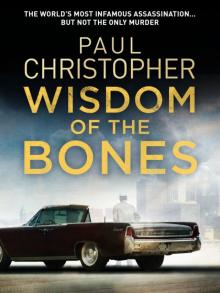 Wisdom of the Bones
Wisdom of the Bones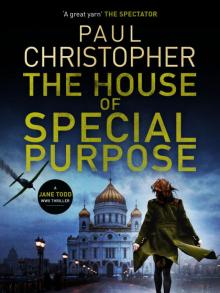 The House of Special Purpose
The House of Special Purpose The Second Assassin
The Second Assassin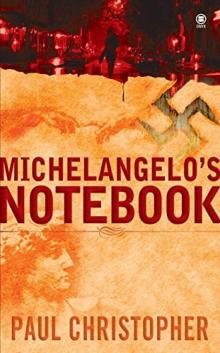 Michelangelo's Notebook
Michelangelo's Notebook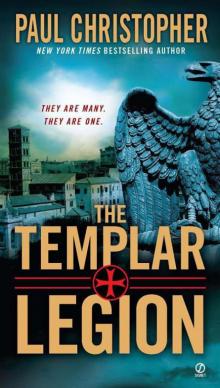 Templar Legion
Templar Legion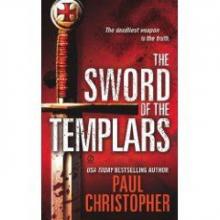 The Sword of the Templars t-1
The Sword of the Templars t-1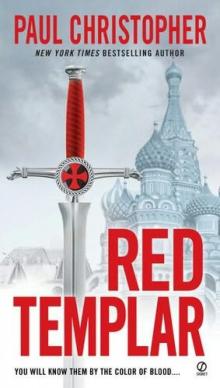 Red Templar
Red Templar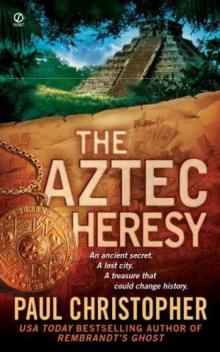 The Aztec Heresy
The Aztec Heresy The Templar Legion
The Templar Legion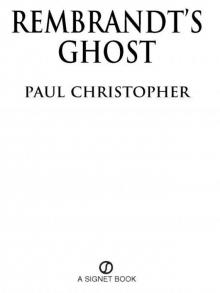 Rembrandt's Ghost
Rembrandt's Ghost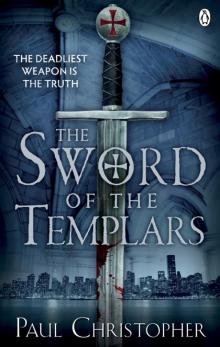 Sword of the Templars
Sword of the Templars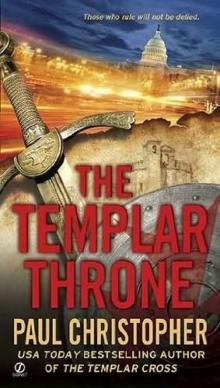 The Templar throne t-3
The Templar throne t-3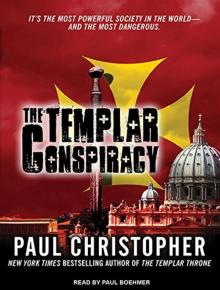 The Templar Conspiracy
The Templar Conspiracy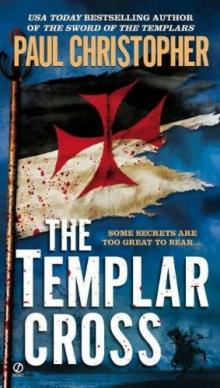 The Templar Cross t-2
The Templar Cross t-2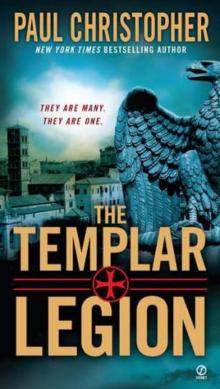 The Templar Legion t-5
The Templar Legion t-5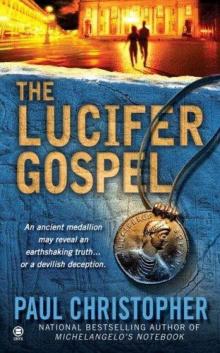 The Lucifer Gospel
The Lucifer Gospel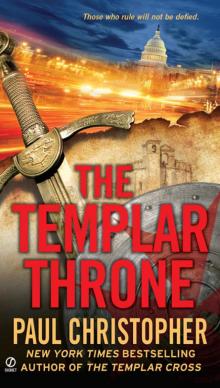 Templar Throne
Templar Throne Michelangelo_s Notebook fr-1
Michelangelo_s Notebook fr-1 The Lucifer Gospel fr-2
The Lucifer Gospel fr-2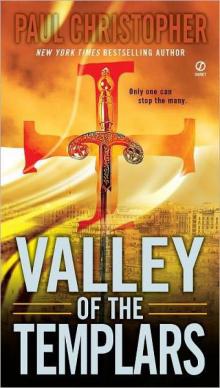 Valley of the Templars ts-7
Valley of the Templars ts-7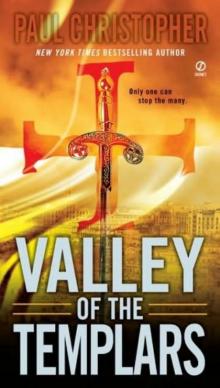 Valley of the Templars
Valley of the Templars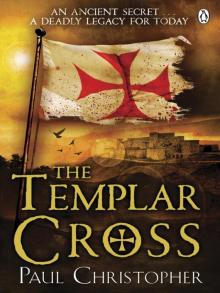 Templar Cross
Templar Cross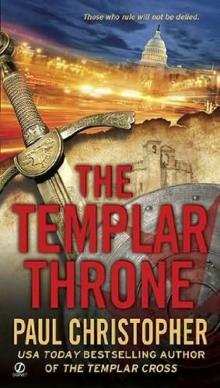 The Templar Throne
The Templar Throne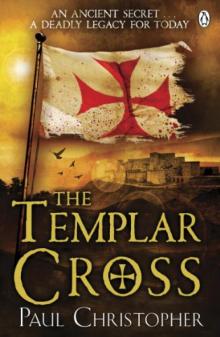 The Templar Cross
The Templar Cross Lost City of the Templars
Lost City of the Templars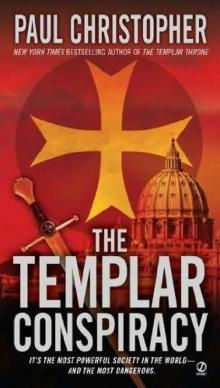 The Templar conspiracy t-4
The Templar conspiracy t-4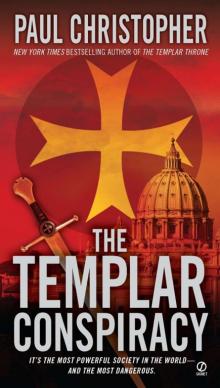 Templar Conspiracy
Templar Conspiracy